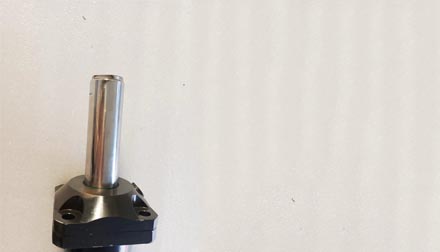Nov . 16, 2024 04:53 Back to list
welding hydraulic cylinder factories
The Role of Welding in Hydraulic Cylinder Manufacturing
Hydraulic cylinders are crucial components in various industries, including construction, automotive, and manufacturing. These cylinders operate by converting hydraulic energy into mechanical energy, allowing for powerful and controlled movement. One of the key processes in the production of hydraulic cylinders is welding, which ensures structural integrity and performance reliability. This article delves into the importance of welding in hydraulic cylinder factories and the techniques involved.
Importance of Welding in Hydraulic Cylinder Production
Welding plays a vital role in the fabrication of hydraulic cylinders. This process is not merely about joining parts; it is about ensuring that the joint can withstand high pressures and dynamic loads. Hydraulic cylinders are often subjected to extreme conditions, which can include heavy loads and fatigue over time. As such, the welding processes used must produce strong, durable seams that can resist deformation and maintain functionality under stress.
In hydraulic cylinder factories, various welding methods are employed, including MIG (Metal Inert Gas), TIG (Tungsten Inert Gas), and submerged arc welding. Each technique has its advantages and is chosen based on the specific requirements of the cylinder being manufactured. For instance, MIG welding is commonly used for its speed and versatility, making it suitable for high-volume production. On the other hand, TIG welding is preferred for its precision and the quality of the weld, often employed in applications where aesthetics and strength are critical.
Techniques and Advancements in Welding
Modern hydraulic cylinder manufacturing utilizes advanced welding techniques and technologies to enhance the quality of the final product. Automated welding systems are increasingly common in factories, providing consistent results and reducing human error. These systems can operate at high speeds and can be programmed to perform complex welds, ensuring that each cylinder meets stringent quality standards.
welding hydraulic cylinder factories

Furthermore, the integration of computer-aided design (CAD) and computer-aided manufacturing (CAM) has revolutionized the welding process in hydraulic cylinder factories. These technologies allow manufacturers to simulate the welding process, optimizing parameters such as heat input, travel speed, and weld bead size before actual production begins. This not only improves efficiency but also results in stronger and more reliable welds.
Another significant advancement is the use of non-destructive testing (NDT) methods, which are critical in the quality control of welded hydraulic cylinders. Techniques such as ultrasonic testing, radiographic testing, and dye penetrant inspection help detect any flaws or imperfections in the welds that could compromise cylinder performance. By implementing these testing methods, manufacturers can ensure that their products meet safety and reliability standards before they reach the market.
The Future of Welding in Hydraulic Cylinder Factories
As technology continues to evolve, the future of welding in hydraulic cylinder manufacturing looks promising. Innovations in welding materials, such as improved filler metals and coatings, are being developed to enhance the performance of hydraulic cylinders. Additionally, the integration of artificial intelligence and machine learning can further streamline the welding process, providing real-time feedback and adjustments to improve quality and efficiency.
Moreover, sustainability is becoming increasingly important in manufacturing processes, including welding. Factories are exploring eco-friendly practices, such as reducing energy consumption and minimizing waste during the welding process. This commitment to sustainability not only benefits the environment but also enhances the overall efficiency of the production process.
Conclusion
Welding remains a cornerstone of hydraulic cylinder manufacturing, ensuring that these essential components are built to withstand the rigors of modern machinery. As advancements continue to shape the welding landscape, manufacturers are poised to produce even stronger and more reliable hydraulic cylinders. With a focus on quality, efficiency, and sustainability, welding in hydraulic cylinder factories will undoubtedly evolve to meet the demands of future industries.
-
Fork Lift Power Units - Hebei Shenghan | Efficiency, Reliability
NewsJul.13,2025
-
1.5-Ton Turbocharged Cylinder-Hebei Shenghan|Hydraulic Solution,Energy Efficiency
NewsJul.13,2025
-
Auto Hoist Power Units-Hebei Shenghan|Efficiency&Industrial Lifting
NewsJul.13,2025
-
Double Acting Power Units-Hebei Shenghan|Hydraulic Solutions,Industrial Efficiency
NewsJul.13,2025
-
1.5 Ton Lifting Cylinder 70/82-40-290-535 - High-Performance Hydraulic Solution | Hebei Shenghan
NewsJul.13,2025
-
Fork Lift Power Units - Hebei Shenghan | Efficiency&Reliability
NewsJul.13,2025
